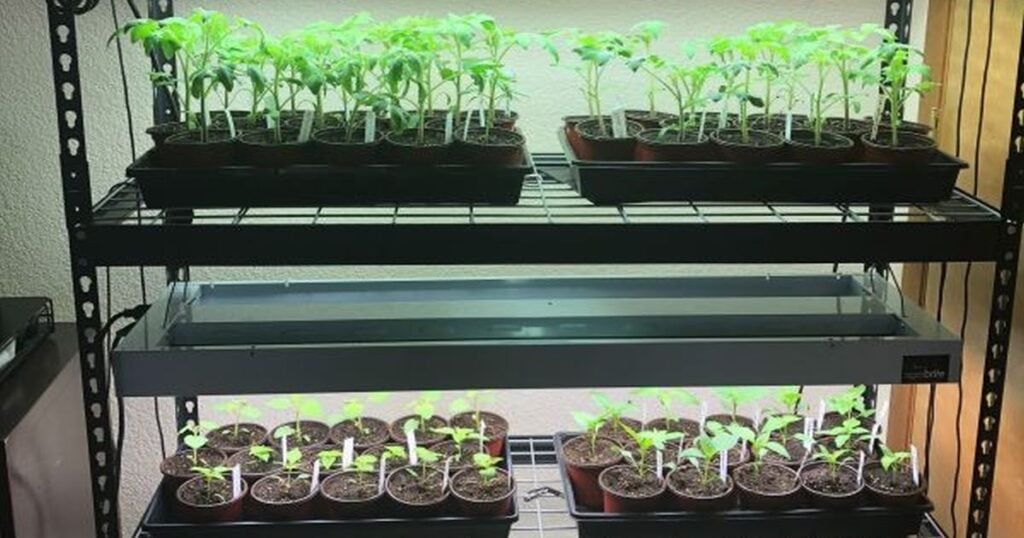
For most gardeners in Zones 5-6 February as an ideal time to start seeds indoors.
While Zones 5 and 6 share some commonalities in their growing calendars, the slight differences between them in terms of climate require tailored approaches to seed starting.
Here’s a guide to what seeds to start indoors in February for both zones, with distinctions made where necessary.
Common Seeds to Start in February for Zones 5-6
1. Tomatoes and Peppers: Both Zones 5 and 6 can benefit from starting tomatoes and peppers indoors in February. These warmth-loving plants need a head start indoors to ensure they mature and produce fruit during the warmer months. Start these seeds 6-8 weeks before the last frost date, which varies slightly between the zones but generally falls around mid to late May.
2. Eggplants: Similar to tomatoes and peppers, eggplants thrive when started indoors during February. They require 6-8 weeks of indoor growth before being transplanted outside after the danger of frost has passed.
3. Broccoli, Cauliflower, and Cabbage: These cool-season crops can be started indoors in February for an early spring harvest. In Zone 5, aim to start these seeds by mid-February to early March, while Zone 6 gardeners might start a bit earlier in February to take advantage of a slightly warmer spring.
4. Lettuce and Greens: Start lettuce and other leafy greens indoors in February for an early spring harvest. These crops can tolerate cooler outdoor temperatures, so they’re among the first to be transplanted outside.
Zone-Specific Considerations
Zone 5:
- Leeks and Onions: February is a great time to start these indoors in Zone 5. They need a long growing season and can be transplanted outdoors as soon as the soil is workable.
- Herbs: Some hardy herbs like parsley and cilantro can be started indoors in late February for Zone 5, preparing for an early spring transplant.
Zone 6:
- Flowers: In addition to vegetables, Zone 6 gardeners can start a variety of flowers indoors in February, such as marigolds, zinnias, and petunias, to get a jump on spring blooms.
- Melons: While it might be slightly early, ambitious Zone 6 gardeners can, depending on your specific microclimate, start melons indoors late in February, especially if you plan on using season extension methods like cold frames or floating row covers outdoors.
Tips for Seed Starting Success
- Use Quality Seeds: Always start with high-quality seeds from a reputable supplier to ensure germination and healthy plant development.
- Proper Soil and Containers: Use seed starting mix and clean, suitable containers with drainage holes to promote healthy root growth.
- Lighting: Provide plenty of light. Seedlings need about 14-16 hours of light a day. Consider using grow lights if natural sunlight is insufficient.
- Temperature Control: Keep the soil at the right temperature for germination. Most vegetables prefer soil temperatures between 65°F and 75°F.
- Watering: Keep the soil moist but not waterlogged. Overwatering can lead to fungal diseases like damping-off.

